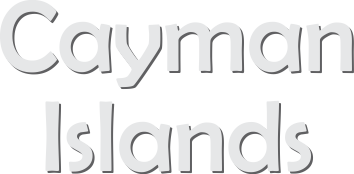
Cayman Islands is an overseas British territory in the Caribbean Sea, in the region of Central America. Christopher Columbus, the great explorer, discovered these beautiful islands on 10th May, 1503, when his ship was blown off course by strong winds. He saw that the islands were full of turtles, so he named them Las Tortugas, a Spanish name for ‘turtles’. However, it was because of the abundance of the marine crocodiles that the islands got its name after the Carib word ‘Caymanas’. Remoteness of location and beautiful landscape has made it an excellent tourist destination in the Caribbean Sea. Grand Cayman, one of its three islands, is the most populated island and is well known for its Seven Mile Beach. Let us learn more about this island.
Located in the Caribbean Sea, near Central America, Cayman Islands is a group of 3 islands, namely the Grand Cayman, the Cayman Brac and the Little Cayman. Island nations close to it are Cuba (about 240 km) to the south and Jamaica (about 268 km) to the north. Covering a total area of about 264 sq. km, it lies between the geographic coordinates 19°30’N latitude and 80°30’W longitude. Its coastline stretches to about 160 km and the islands are about 1.5 times the size of Washington DC, ranking 211th in the world.

The Cayman Islands enjoy a tropical marine climate with wet season of warm, rainy summers from the month of May to the month of October and cool, dry winter from the months between November to April. Its terrain is mostly low-lying, limestone base surrounded by coral reefs. The lowest point of elevation is Caribbean Sea at 0 m whereas the highest point of elevation is Bluff on the Cayman Brac at 43 m. Its natural resources are fish, climate and beaches that support tourism. It faces hurricanes from the month of July to the month of November. It has no natural fresh water resources and hence, drinking water supplies are met by rains.

Trees like mahogany, logwood, coconut and thatch palm are found on the Cayman Islands. Fruit trees like seagrape, almonds casuarinas, breadfruit, papaya, avocado, citrus, mango and naseberry grow here along with sweet potatoes, yam, pumpkins and cantaloupe. Fauna may include reptiles such as green turtle, harmless snakes, small lizards, land crabs, turtles and two species of frog; agouti, bats and butterflies are found here. The rare and endangered Blue iguana can be viewed at the Queen Elizabeth II Botanic Park. Birds like Antillean Grackle, smooth-billed Ani, heron, dove, bananaquit and Cayman Parrot (national bird) are found on the islands.


Sea food is an important part of the Caymanian diet. Turtles and conches are very popular and are either served raw with lime juice and onions or cooked as stew, chowder or fritters. Recipes such as jerking and heavy cake are made from breadkind (starchy vegetables such as cassava, papaya and yam) and are influenced by Caribbean countries like Jamaica and Trinidad. ‘Fish rundown’ is a popular dish where fish is stewed with breadkind. Other common ingredients include key limes, honey, rum and coconut. Other than fish, turtle meat and a few local fruits and vegetables, all the other food has to be imported. During Christmas, beef (a luxury item) is featured, along with heavy cake and non-native fruits such as apples, pears and grapes. Beer is produced locally. Drinks based on corn, sorrel and pineapple is traditional during the holiday season.

English is the official language spoken by about 90% of the Caymanians. Other languages spoken on the island are Spanish and Filipino. About 67.8% of the Caymanians are Protestants (Church of God, Seventh Day Adventist, Presbyterian/United Church, Baptist, Pentecostal, non-denominational, Anglicans, Wesleyan Holiness), Roman Catholics are about 14.1% and a small population of Jehovah’s Witness.

Traditional society in Cayman Islands is matriarchal, where women play an important role in family, business and government. After the 1930s, women began to play a bigger role in the social and economic life. In marriages, monogamy is followed. Households range from a single person, nuclear families, single-parent families and extended-family units where women play a dominating role. Parents are expected to control the behaviour of their children with strong emphasis on politeness and modesty. Handshake is the usual form of greeting. A person may be introduced by his or her first name. Unlike many tourist destinations, there is no "beach-hawking" culture; topless bathing is illegal, and wearing swimsuits off the beach is frowned on, although casual dress is acceptable.

Due to its ‘no direct taxation’ policy, Cayman Island has become a prosperous offshore financial centre with nearly 93,000 companies registered on the island since 2008. About 300 banks, 800 insurance and 10,000 mutual funds companies function from here and it also houses a Stock Exchange. Tourism is its main stay and Caymanians enjoy a high standard of living. The agricultural products are vegetables, fruit, livestock and turtle farming. Industries that contribute to its development are tourism, banking, insurance and finance, construction, construction materials and furniture. It exports turtle products and manufactured goods whereas its imports include foodstuffs, manufactured goods and fuels.



